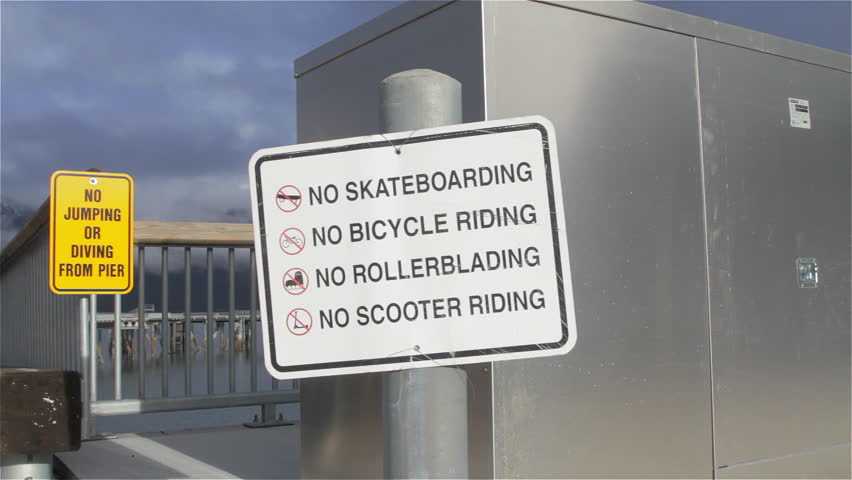1. Skateboarding
Skateboarding is everywhere. You see it on TV, in movies, on cereal boxes, the Internet, and around town.
)
It’s easy to find a basketball hoop or swing set almost anywhere you go. Yet when it comes to skateboarding, skaters are often restricted of choice, with no skatepark they ride on the streets, school campuses, parking lots, and other places around town… or simply don’t skate at all. They show an uncommon dedication to their sport. And what does this commitment to physical exercise and outdoor activity earn them? In many areas it gets them a big fine.
When a community treats its skateboarders as pariahs, outcasts, and nuisances, they are telling skateboarding youth that they are not welcome there.
Skaters are routinely confronted and ticketed by police. Skaters see this as an un-winnable situation; they are passionate about skating but every attempt to find a place to skate inevitably leads to a confrontation with authority.
After decades of this treatment, “illicit” street-skating has become an indelible part of the skateboarder’s experience. This is NOT because skateboarding culture has an anti-authoritarian tone, but because so many communities have systematically confined skateboarding that skaters treat each place to skate as a temporary situation until they are kicked out. For many, it is a daily ritual. Every experienced skateboarder can share a story of being treated like a criminal.
So if your city doesn’t have a skatepark, where are you meant to skate??
Even where skating is tolerated, skaters put themselves at risk of being hit by vehicles. On average, nearly one skateboarder dies a week in the United States in an accident that involves a motor vehicle. (Skaters for Public Skateparks Casualty Report, 2011)
Even where skating is tolerated, skaters put themselves at risk of being hit by vehicles. On average, nearly one skateboarder dies a week in the United States in an accident that involves a motor vehicle. (Skaters for Public Skateparks Casualty Report, 2011)
There are more towns with laws preventing skateboarding than there are skateparks. Balance is getting closer one skatepark at a time, but without more skatepark advocates, communities gravitate towards a “solution” that seeks to prevent the activity rather than direct it toward places where it’s appropriate.
A park is a gathering place for the community. A skatepark is a gathering place for the local skateboarders. Through the skatepark, the public sees skaters for what they are: brave, athletic youth with a passion for skateboarding. That’s all! The stereotypes that may have plagued skateboarders before the skatepark are quickly forgotten.
There are over six-million skateboarders in the United States. Most of them are 24 years old or younger. According to the U.S. Census there are about 85-million people in the United States between the ages of 5 and 24. Therefore, 7.7% of youth in the nation have ridden a skateboard within the last year. (In the larger context, 2.1% of all Americans have ridden a skateboard this year.) That’s a huge number that cannot be ignored.
Skateboarding is an old hobby of mine which I have grown up alongside. I can heavily relate to the issues faced by a skateboarder, but now I am older I can also see from society's perspective of it being a nuisance.
- It would be interesting to look into this and see how it varies in the UK to the US.
- I can be heavily inspired by all the skate graphics and the new era of design and approach in skate ads
- See how all this can inspire a new campaign fighting for skaters rights and encouraging the development of more skate-parks/street spots?
2. How technology is turning us into robots
This topic does provide me with a much wider scope of research, and possibilities for what and how I am going to respond to the issue.
It is more applicable to a wider target audience of nearly everyone in our modern society, so it would be interesting to respond to something which influences everyone, trying to intrigue and attract as many people as possible with a single campaign - broader terms of distribution and product.





This comment has been removed by the author.
ReplyDelete